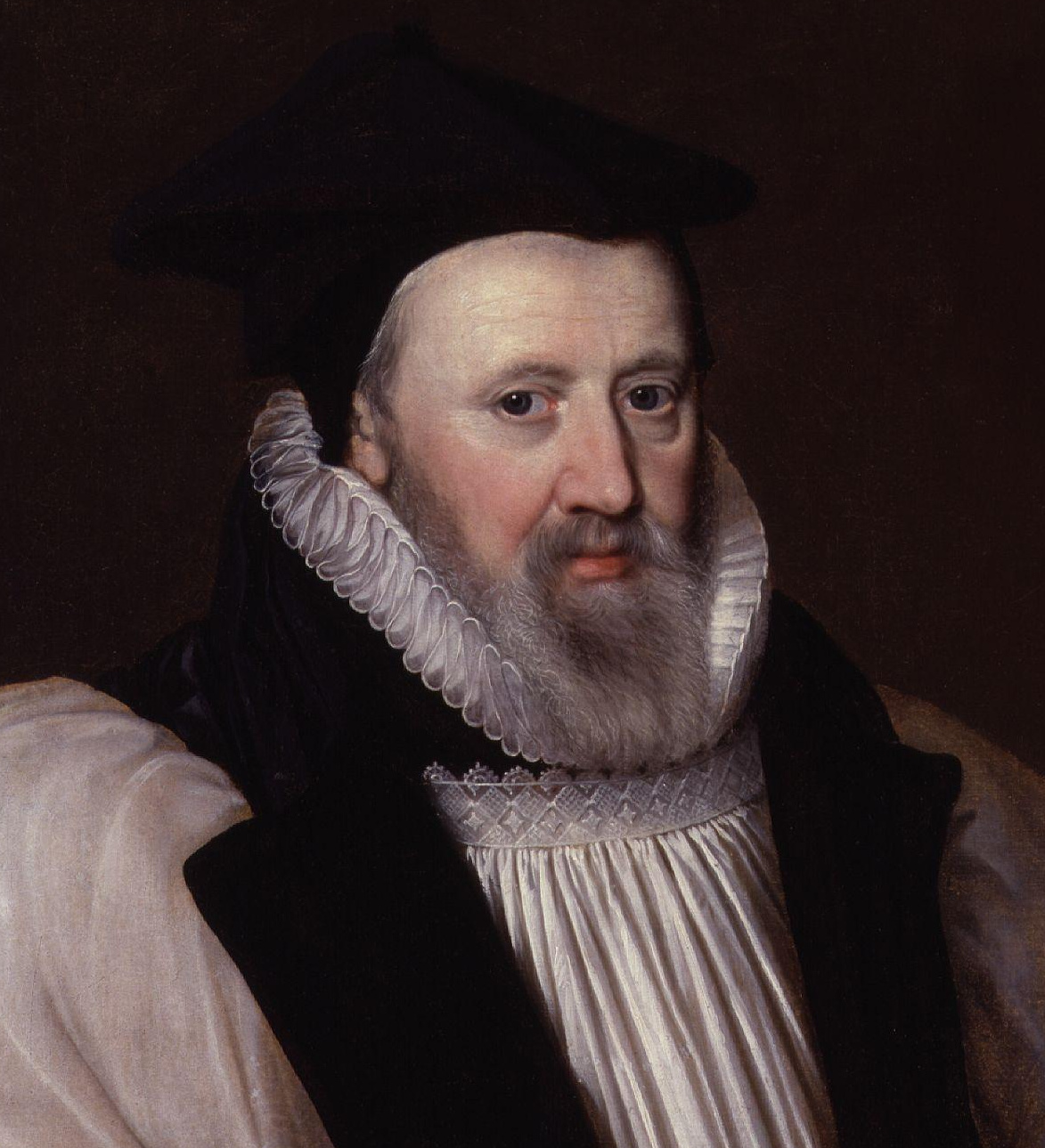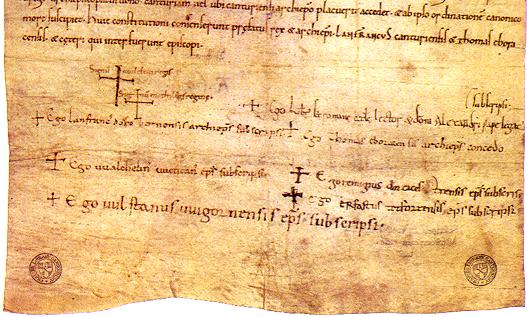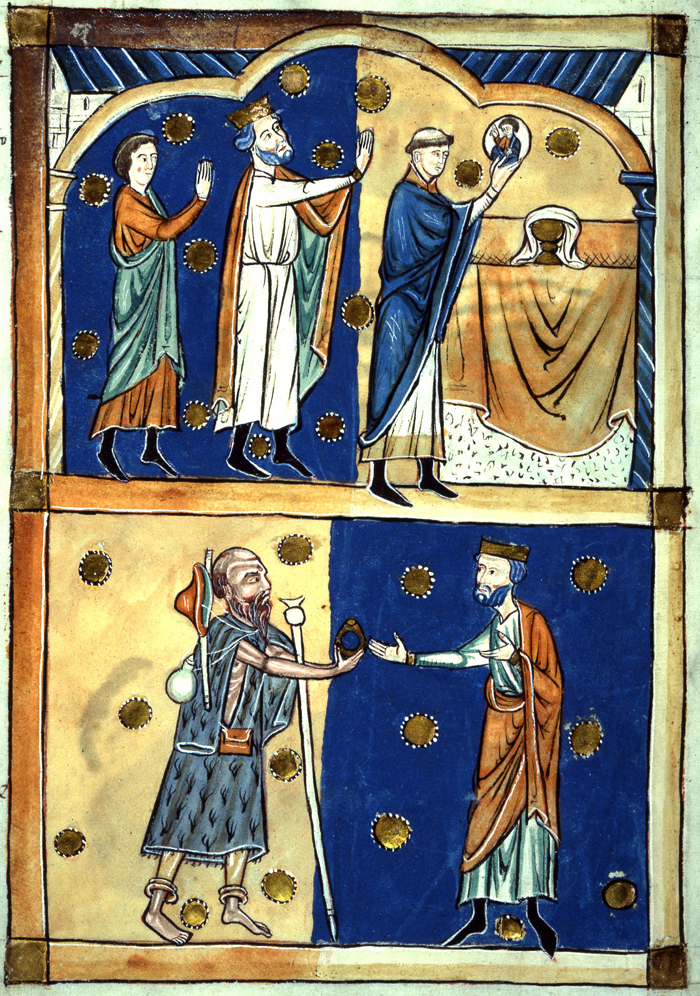|
Leofwin Croz
__NOTOC__ Leofwin (or Leofwine; died after 1071) was a medieval Bishop of Lichfield. Appointed to the see by King Edward the Confessor of England, Leofwin was a monk before becoming a bishop.Knowles ''Monastic Order'' p. 71 footnote 2 For a time, he was abbot of the abbey of Coventry as well as bishop, but he was no longer abbot at the time of the Norman Conquest of England.Knowles ''Monastic Order'' p. 111 footnote 4 He may have owed his promotion to Lichfield to Leofric, Earl of Mercia and Leofric's family.Barlow ''English Church'' p. 109 footnote 3 He was consecrated in 1053, but he went overseas to be consecrated because of the irregular election of Archbishop Stigand of Canterbury.Powell and Wallis ''House of Lords'' p. 13 footnote 8 Around 1068, he was the recipient of a writ from King William I of England, which shows that he had accommodated himself to the Conquest.Powell and Wallis ''House of Lords'' p. 14 According to the ''Handbook of British Chronology'', he die ... [...More Info...] [...Related Items...] OR: [Wikipedia] [Google] [Baidu] |
Bishop Of Lichfield
The Bishop of Lichfield is the ordinary of the Church of England Diocese of Lichfield in the Province of Canterbury. The diocese covers 4,516 km2 (1,744 sq. mi.) of the counties of Powys, Staffordshire, Shropshire, Warwickshire and West Midlands. The bishop's seat is located in the Cathedral Church of the Blessed Virgin Mary and Saint Chad in the city of Lichfield. The Bishop's residence is the Bishop's House, Lichfield, in the cathedral close. In the past, the title has had various forms (see below). The current bishop is Michael Ipgrave, following the confirmation of his election on 10 June 2016.OurCofE twitter (Accessed 11 June 2016) History [...More Info...] [...Related Items...] OR: [Wikipedia] [Google] [Baidu] |
Frank Barlow (historian)
Frank Barlow (19 April 1911 – 27 June 2009) was an English historian, known particularly for biographies of medieval figures. His subjects included Edward the Confessor, Thomas Becket and William Rufus. Academic life Barlow studied at St John's College, Oxford. He was Professor of History at the University of Exeter from 1953 until he retired in 1976 and became Emeritus Professor. He was a Fellow of both the British Academy and the Royal Society of Literature, and was appointed commander of the Order of the British Empire in the 1989 Queen's Birthday Honours "for services to the study of English medieval history". Works *''The Feudal Kingdom of England'' (1955) *''The Life of King Edward Who Rests at Westminster'' (1962, 2nd edition 1992), editor and translator *''Edward the Confessor'' (1970, 2nd edition 1997) *''The English Church 1066–1154'' (1979) *''The Norman Conquest and Beyond'' (1983) *''William Rufus'' (Berkeley, California, University of California Press, 1983) ... [...More Info...] [...Related Items...] OR: [Wikipedia] [Google] [Baidu] |
11th-century Deaths
The 11th century is the period from 1001 ( MI) through 1100 ( MC) in accordance with the Julian calendar, and the 1st century of the 2nd millennium. In the history of Europe, this period is considered the early part of the High Middle Ages. There was, after a brief ascendancy, a sudden decline of Byzantine power and a rise of Norman domination over much of Europe, along with the prominent role in Europe of notably influential popes. Christendom experienced a formal schism in this century which had been developing over previous centuries between the Latin West and Byzantine East, causing a split in its two largest denominations to this day: Roman Catholicism and Eastern Orthodoxy. In Song dynasty China and the classical Islamic world, this century marked the high point for both classical Chinese civilization, science and technology, and classical Islamic science, philosophy, technology and literature. Rival political factions at the Song dynasty court created strife amongst th ... [...More Info...] [...Related Items...] OR: [Wikipedia] [Google] [Baidu] |
Bishops Of Lichfield
The Bishop of Lichfield is the ordinary of the Church of England Diocese of Lichfield in the Province of Canterbury. The diocese covers 4,516 km2 (1,744 sq. mi.) of the counties of Powys, Staffordshire, Shropshire, Warwickshire and West Midlands. The bishop's seat is located in the Cathedral Church of the Blessed Virgin Mary and Saint Chad in the city of Lichfield. The Bishop's residence is the Bishop's House, Lichfield, in the cathedral close. In the past, the title has had various forms (see below). The current bishop is Michael Ipgrave, following the confirmation of his election on 10 June 2016.OurCofE twitter (Accessed 11 June 2016) History [...More Info...] [...Related Items...] OR: [Wikipedia] [Google] [Baidu] |
Bulletin Of The Institute Of Historical Research
The Institute of Historical Research (IHR) is a British educational organisation providing resources and training for historical researchers. It is part of the School of Advanced Study in the University of London and is located at Senate House. The institute was founded in 1921 by A. F. Pollard. History Foundation The IHR was founded in 1921 by British historian Albert Pollard. Appointed Professor of Constitutional History at University College London in 1903, his inaugural address, a year later, argued for the need for a postgraduate school of historical research. With a generous and anonymous donation of £20,000 from Sir John Cecil Power in 1920 towards the founding of the institute, Pollard's dream was realised. The institute was formally opened by H. A. L. Fisher on 8 July 1921. The IHR was directly administered by the Senate of the University of London, rather than being part of one of the federal colleges. It was the first organisation to be administered under such ... [...More Info...] [...Related Items...] OR: [Wikipedia] [Google] [Baidu] |
Lanfranc
Lanfranc, OSB (1005 1010 – 24 May 1089) was a celebrated Italian jurist who renounced his career to become a Benedictine monk at Bec in Normandy. He served successively as prior of Bec Abbey and abbot of St Stephen in Normandy and then as Archbishop of Canterbury in England, following its Conquest by William the Conqueror. He is also variously known as ( it, Lanfranco di Pavia), (french: Lanfranc du Bec), and ( la, Lanfrancus Cantuariensis). Early life Lanfranc was born in the early years of the 11th century at Pavia, where later tradition held that his father, Hanbald, held a rank broadly equivalent to magistrate. He was orphaned at an early age. Lanfranc was trained in the liberal arts, at that time a field in which northern Italy was famous (there is little or no evidence to support the myth that his education included much in the way of Civil Law, and none that links him with Irnerius of Bologna as a pioneer in the renaissance of its study). For unknown reasons ... [...More Info...] [...Related Items...] OR: [Wikipedia] [Google] [Baidu] |
Archbishop Of Canterbury
The archbishop of Canterbury is the senior bishop and a principal leader of the Church of England, the ceremonial head of the worldwide Anglican Communion and the diocesan bishop of the Diocese of Canterbury. The current archbishop is Justin Welby, who was enthroned at Canterbury Cathedral on 21 March 2013. Welby is the 105th in a line which goes back more than 1400 years to Augustine of Canterbury, the "Apostle to the English", sent from Rome in the year 597. Welby succeeded Rowan Williams. From the time of Augustine until the 16th century, the archbishops of Canterbury were in full communion with the See of Rome and usually received the pallium from the pope. During the English Reformation, the Church of England broke away from the authority of the pope. Thomas Cranmer became the first holder of the office following the English Reformation in 1533, while Reginald Pole was the last Roman Catholic in the position, serving from 1556 to 1558 during the Counter-Reformation. ... [...More Info...] [...Related Items...] OR: [Wikipedia] [Google] [Baidu] |
Coventry Abbey
The Cathedral Church of Saint Michael, commonly known as Coventry Cathedral, is the seat of the Bishop of Coventry and the Diocese of Coventry within the Church of England. The cathedral is located in Coventry, West Midlands, England. The current bishop is Christopher Cocksworth and the current dean is John Witcombe. The city has had three cathedrals. The first was St Mary's, a monastic building, of which only a few ruins remain. The second was St Michael's, a 14th-century Gothic church later designated as a cathedral, which remains a ruined shell after its bombing during the Second World War. The third is the new St Michael's Cathedral, built immediately adjacent after the destruction of the former. The ruined cathedral is a symbol of war time destruction and barbarity, but also of peace and reconciliation. St Mary's Priory Coventry had a medieval cathedral that survived until the Reformation. This was St Mary's Priory and Cathedral, 1095 to 1102, when Robert de Limesey mov ... [...More Info...] [...Related Items...] OR: [Wikipedia] [Google] [Baidu] |
William I Of England
William I; ang, WillelmI (Bates ''William the Conqueror'' p. 33– 9 September 1087), usually known as William the Conqueror and sometimes William the Bastard, was the first Norman king of England, reigning from 1066 until his death in 1087. A descendant of Rollo, he was Duke of Normandy from 1035 onward. By 1060, following a long struggle to establish his throne, his hold on Normandy was secure. In 1066, following the death of Edward the Confessor, William invaded England, leading an army of Normans to victory over the Anglo-Saxon forces of Harold Godwinson at the Battle of Hastings, and suppressed subsequent English revolts in what has become known as the Norman Conquest. The rest of his life was marked by struggles to consolidate his hold over England and his continental lands, and by difficulties with his eldest son, Robert Curthose. William was the son of the unmarried Duke Robert I of Normandy and his mistress Herleva. His illegitimate status and his youth caused s ... [...More Info...] [...Related Items...] OR: [Wikipedia] [Google] [Baidu] |
Stigand
Stigand (died 1072) was an Anglo-Saxon churchman in pre-Norman Conquest England who became Archbishop of Canterbury. His birth date is unknown, but by 1020 he was serving as a royal chaplain and advisor. He was named Bishop of Elmham in 1043, and was later Bishop of Winchester and Archbishop of Canterbury. Stigand was an advisor to several members of the Anglo-Saxon and Norman English royal dynasties, serving six successive kings. Excommunicated by several popes for his pluralism in holding the two sees, or bishoprics, of Winchester and Canterbury concurrently, he was finally deposed in 1070, and his estates and personal wealth were confiscated by William the Conqueror. Stigand was imprisoned at Winchester, where he died without regaining his liberty. Stigand served King Cnut as a chaplain at a royal foundation at Ashingdon in 1020, and as an advisor then and later. He continued in his role of advisor during the reigns of Cnut's sons, Harold Harefoot and Harthacnut. When C ... [...More Info...] [...Related Items...] OR: [Wikipedia] [Google] [Baidu] |
Leofric, Earl Of Mercia
Leofric (died 31 August or 30 September 1057) was an Earl of Mercia. He founded monasteries at Coventry and Much Wenlock. Leofric is most remembered as the husband of Lady Godiva. Life Leofric was the son of Leofwine, Ealdorman of the Hwicce, who witnessed a charter in 997 for King Æthelred II. Leofric had three brothers: Northman, Edwin and Godwine. It is likely that Northman is the same as ''Northman Miles'' ("Northman the knight") to whom King Æthelred II granted the village of Twywell in Northamptonshire in 1013. Northman, according to the Chronicle of Crowland Abbey, the reliability of which is often doubted by historians, says he was a retainer (knight) of Eadric Streona, the Earl of Mercia.Baxter, ''Earls of Mercia'', pp. 29–30, and n. 45 for reference It adds that Northman had been killed upon Cnut's orders along with Eadric and others for this reason. Cnut "made Leofric ealdorman in place of his brother Northman, and afterwards held him in great affection." Bec ... [...More Info...] [...Related Items...] OR: [Wikipedia] [Google] [Baidu] |



_(The_Angel_with_the_Eternal_Gospel).jpg)


